PENTAX
LX - the last Samurai
(c) Frank Mechelhoff August 2020
Copies allowed only for personal usage -
usage of my pictures only up to 800x600 pixel, with
referencing to the source, and not for anyhow selling
stuff
Contact: taunusreiter "at" yahoo.de
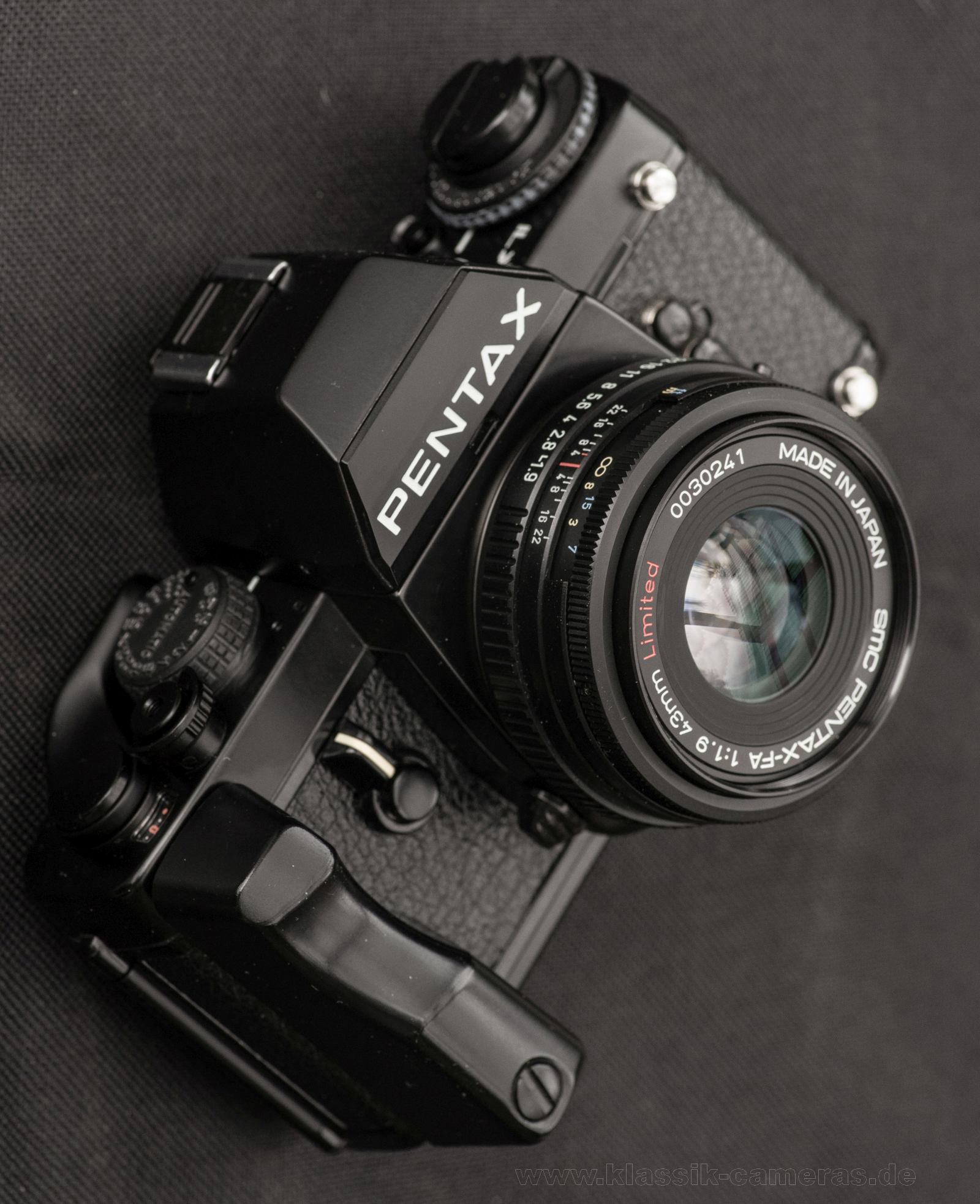
The PENTAX LX
was a high-level Manual Focus (MF) film SLR camera sold
new from 1980 for about the next 30 years.
It was introduced while the M-series (1976-1987) was
sold, a family of advanced, mostly electronically
controlled cameras which were the smallest SLRs of their
time. The LX was a bit larger camera (but not as large as
the K-series), first 35mm SLR of Pentax with
interchangable finders, and as such announced as a
professional grade system camera, competing against Contax
RTS (introduced 1975), Nikon F3 (1979) and Canon New F-1
(1981) - being both smaller and lighther, but equal
sturdy. Before the LX, since 1969 the medium format (120
film) Pentax 6x7, and the Spotmatic series (since 1964) were highly reputated and widely
used by professional photographers, although the
Spotmatic-series had fixed finders.
The LX has a titanium focal plane shutter, mechanically
(1/2000s - 1/75s) and electronically (1/60s - 125s)
controlled, travelling horizontally like classical SLR and
Leica type RF cameras do, other than the vertically
travelling sectional steel blade (SEIKO) shutters of the
K2 and ME/MG/MV (up to 1/125s synch time), but faster
(1/75s) than older type cloth shutters of the MX and KX
(1/60s), and keeps usually more reliable today.
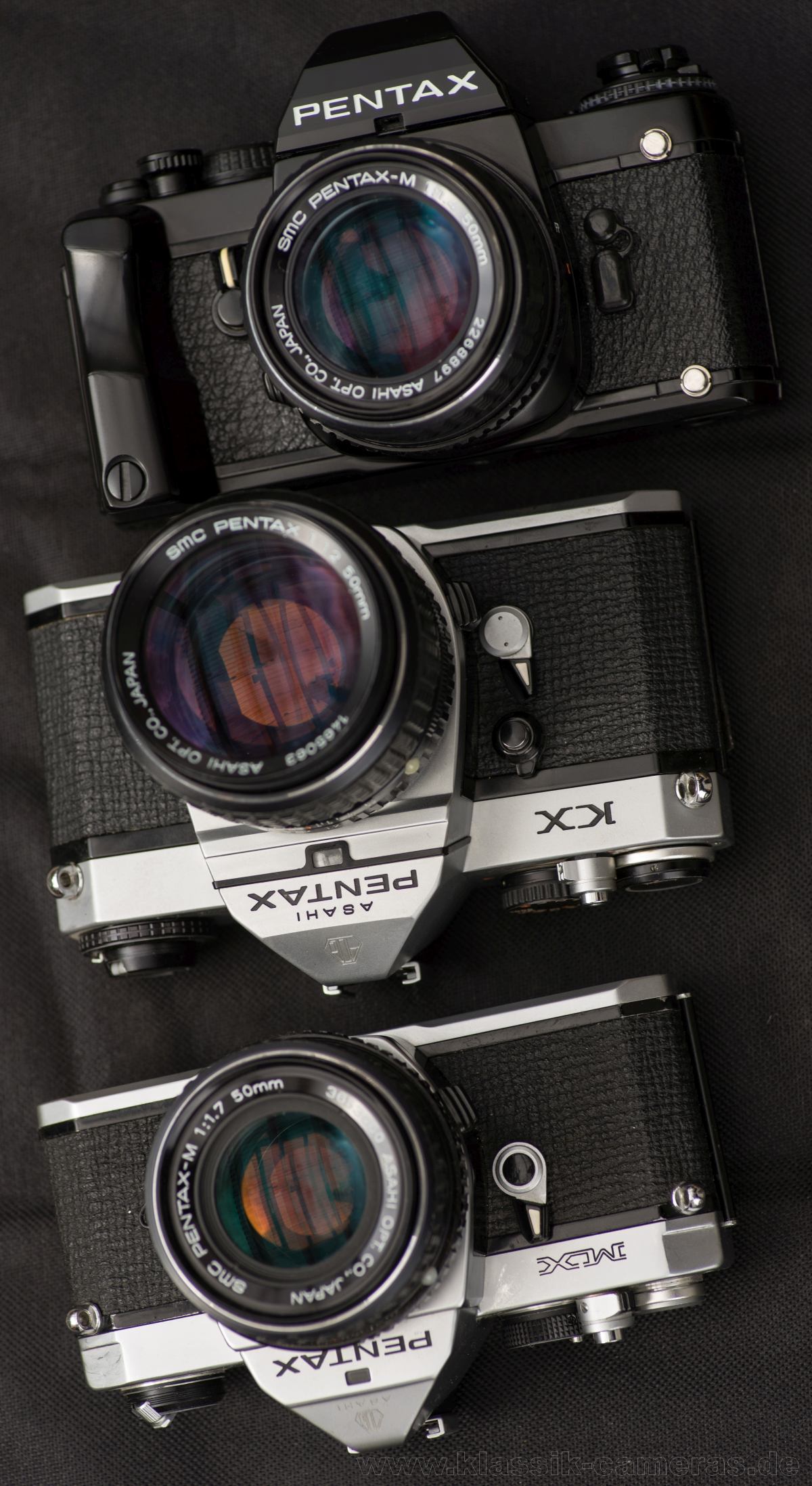
Pentax LX (1980), KX (1975), MX (1976) - Just 5 years,
but worlds between functionally.
The Pentax LX has a aperture-priority automatic exposure
(AE), no autofocus (AF) - this was introduced
first with the ME-F one year later, and no Program
exposure - which appeared with the Super-A camera in 1983
- requiring further connections to the lens, and contacts
in the mount.
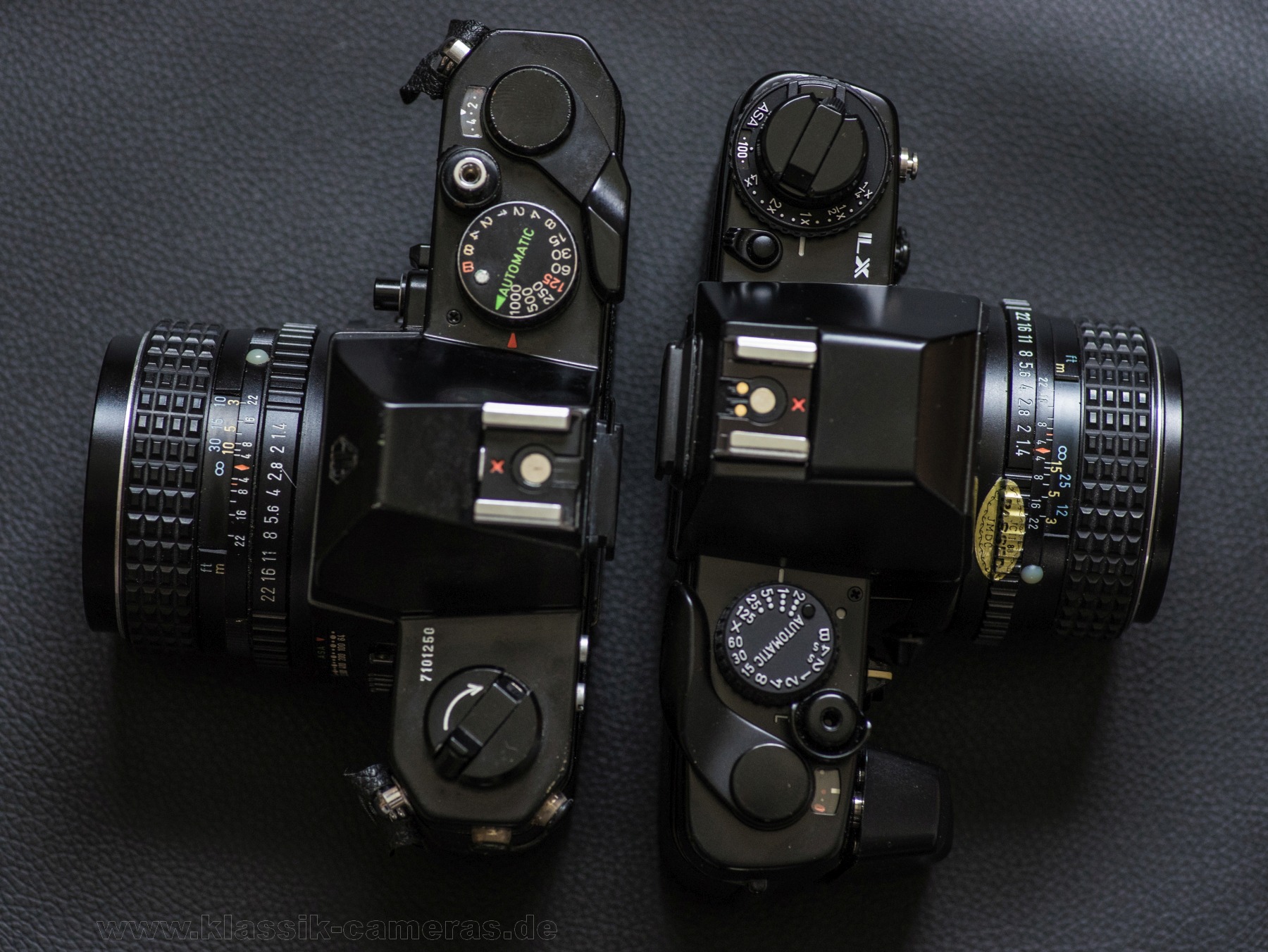
Picture: K2 with the K-1.4/50 (52mm filter) on the
left. On the right LX with the smaller M-1.4/50
(49mm filter)
So what is the main difference to the K2 (introduced
1976), the first K-mount AE camera?
- Interchangable finders
- Manual settings from 1/2000s
to 4s (1/1000s -1s)
- Metering incorporated in the
camera (not the prism finder), Real-Time metering at
the film, advanced flash metering
- Much more sensitive meter
cell, automatic exposure from 1/2000s to 125s (EV-5.5 to EV20) making the
camera very usefull at night photography
- Motor drive with up to 5
frames per second (fps), compared to the larger
motordrive of the K2-DMD offering just 2 fps
- Titanium focal plane shutter
- Outer shell made of aluminium
alloy (opposed to steel and chromed brass of
K-series), making the camera lighter (570 vs. 680 g)
- High level of sealing against
rain and dust (not the mount), this was new in any
brand
- Data back and bulk film back
(this was still available with Pentax MX)
- Improved dial positions and
user friendlyness, special camera grips
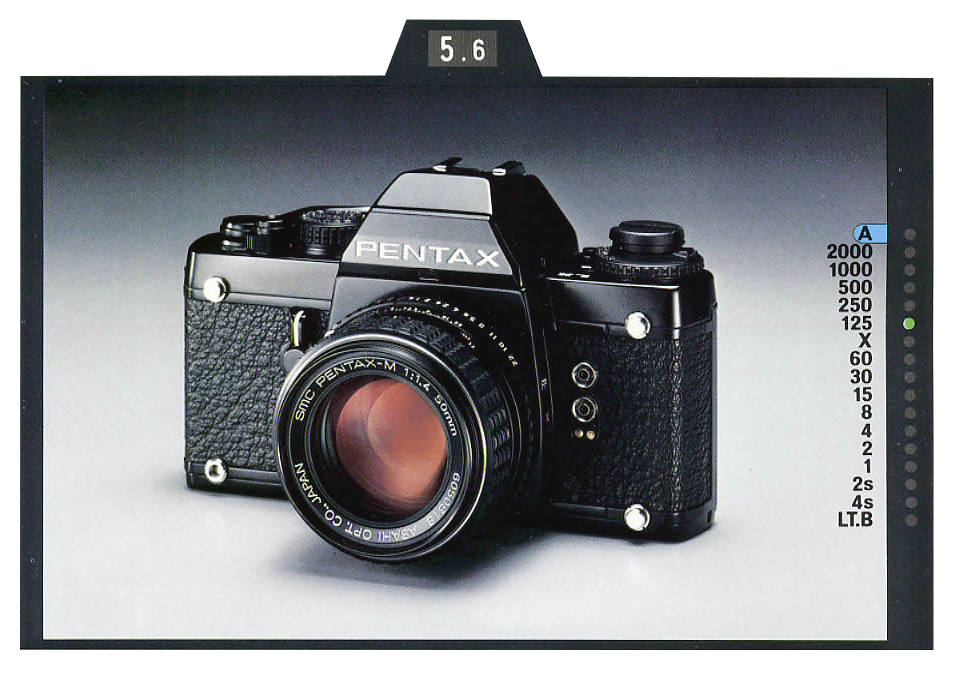
One of the nicest and most user friendly viewfinder
readouts -- okay, the Contax RTS had a similar earlier,
plus aperture readout electronically, which was better to
see in the dark.
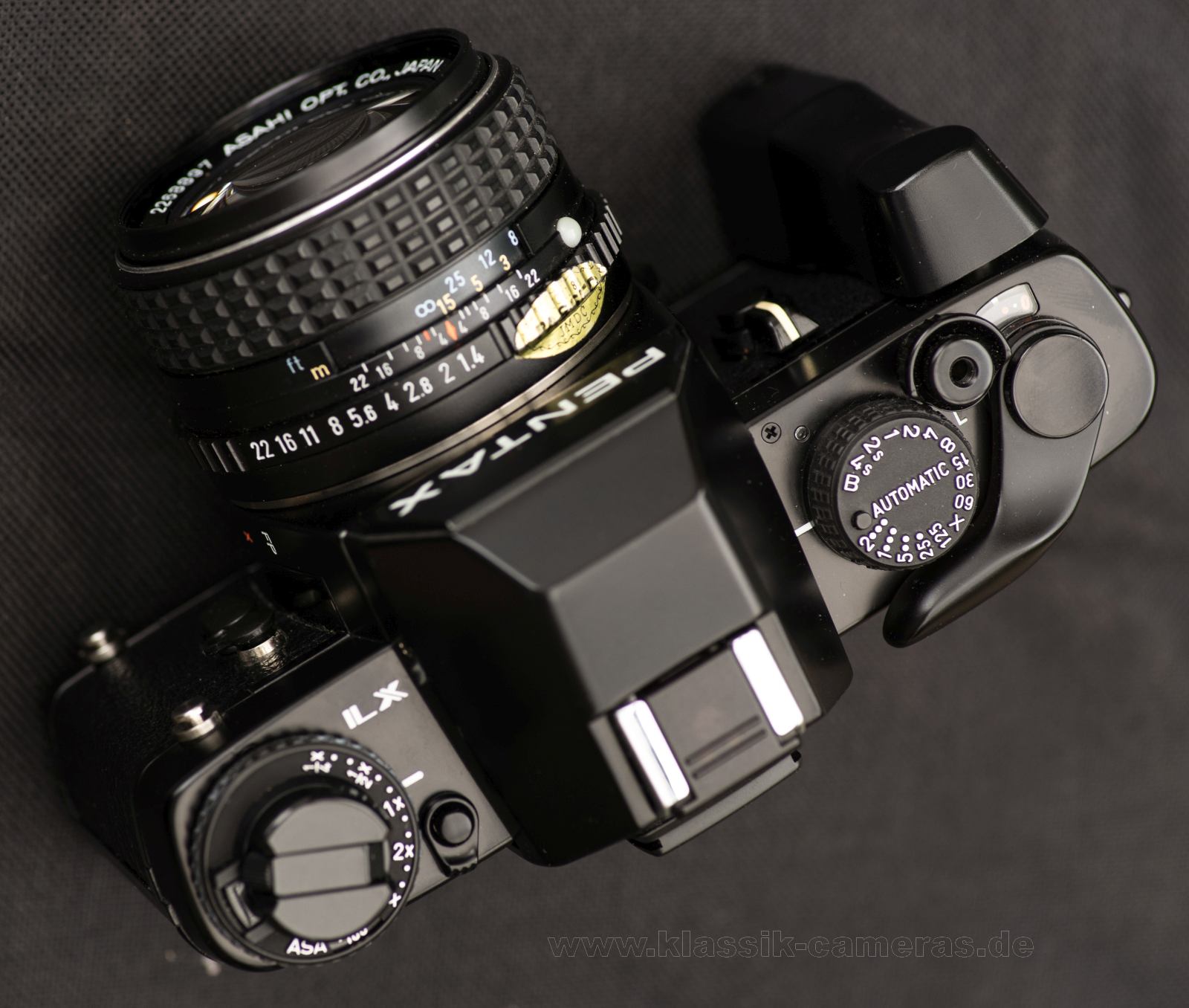
One could argue that the shutter speed dial was made too
small for ordinary lettering and good grip - at least for Non-Japanese hands.
In return, the ISO-dial with
+/- compensation came back from what
it was at the Pentax ES (1971) and
where it is placed best and was
alreday standard from the ME/ME super.
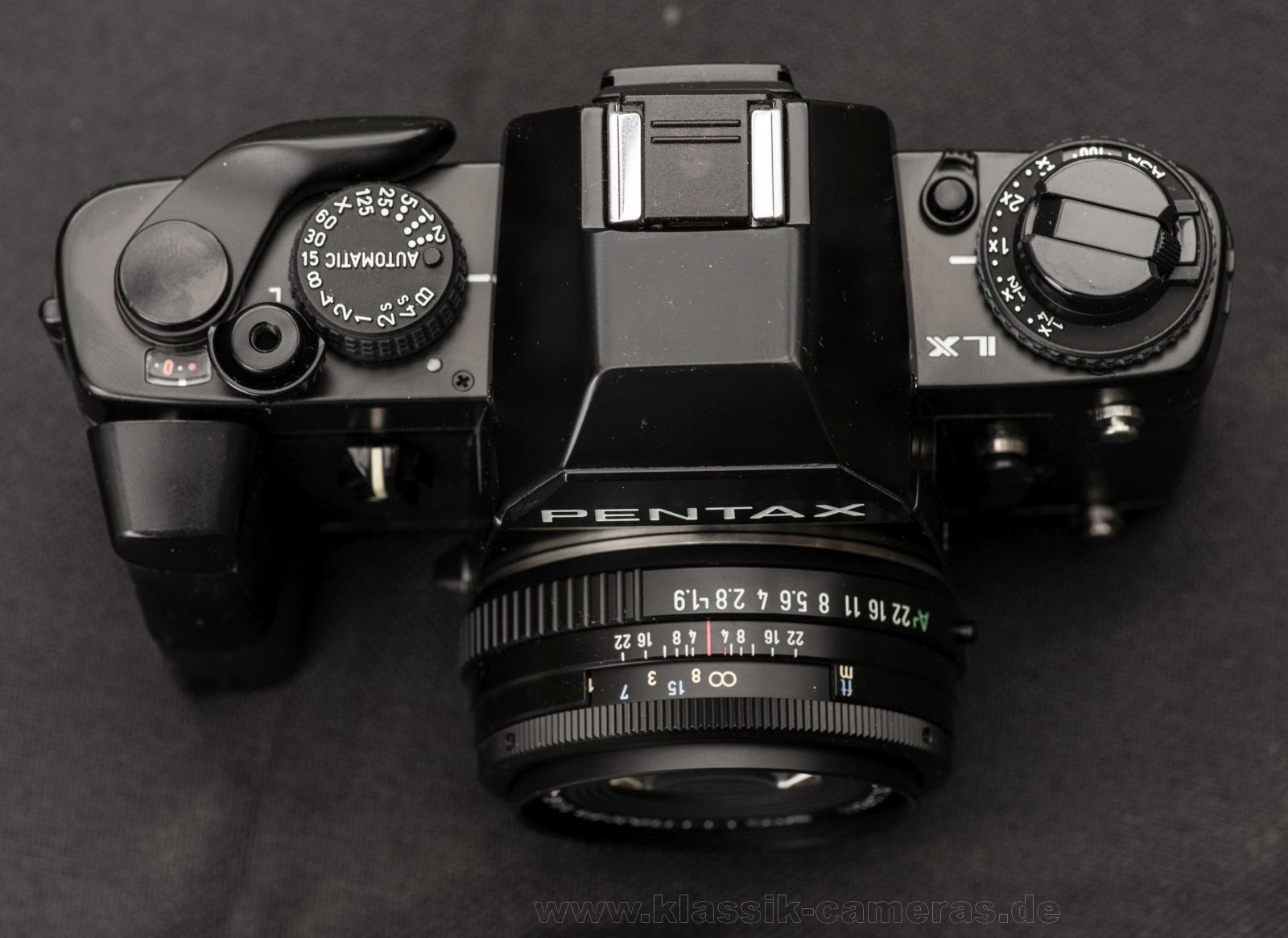
There are 3 known maintenance versions of the LX:
First version: ISO dial to 1600 ASA
Second version: ISO dial to 3200 ASA
Third version: ISO dial toe 3200 ASA, Collar around
release button for locking (as pictured above)
The last version is said to be the most long-lived one,
and least-prone to "sticky mirror syndrome", a common
disease in older focal plane shutter SLR's, resulting from
worn mirror silencers.
(Down:) The smc Pentax 1:1.2/50mm was a lens
coming from the (first) K-Lens series and seldom ordered
with the LX. More often with the 1,4/50 or 1.7/50, which
were both newly developed for the M-series, smaller and
lighther than their predecessors, and even currently
famous for size, build quality, longevity and optical
performance.
On Japanese domestic market there was also an option of
colored dials (colored speed dial and/or colored ISO
dial). As far as I'm concerned, these colors (like the
speed colors of the K2/MX) add readebility, clarity and
beauty to the camera
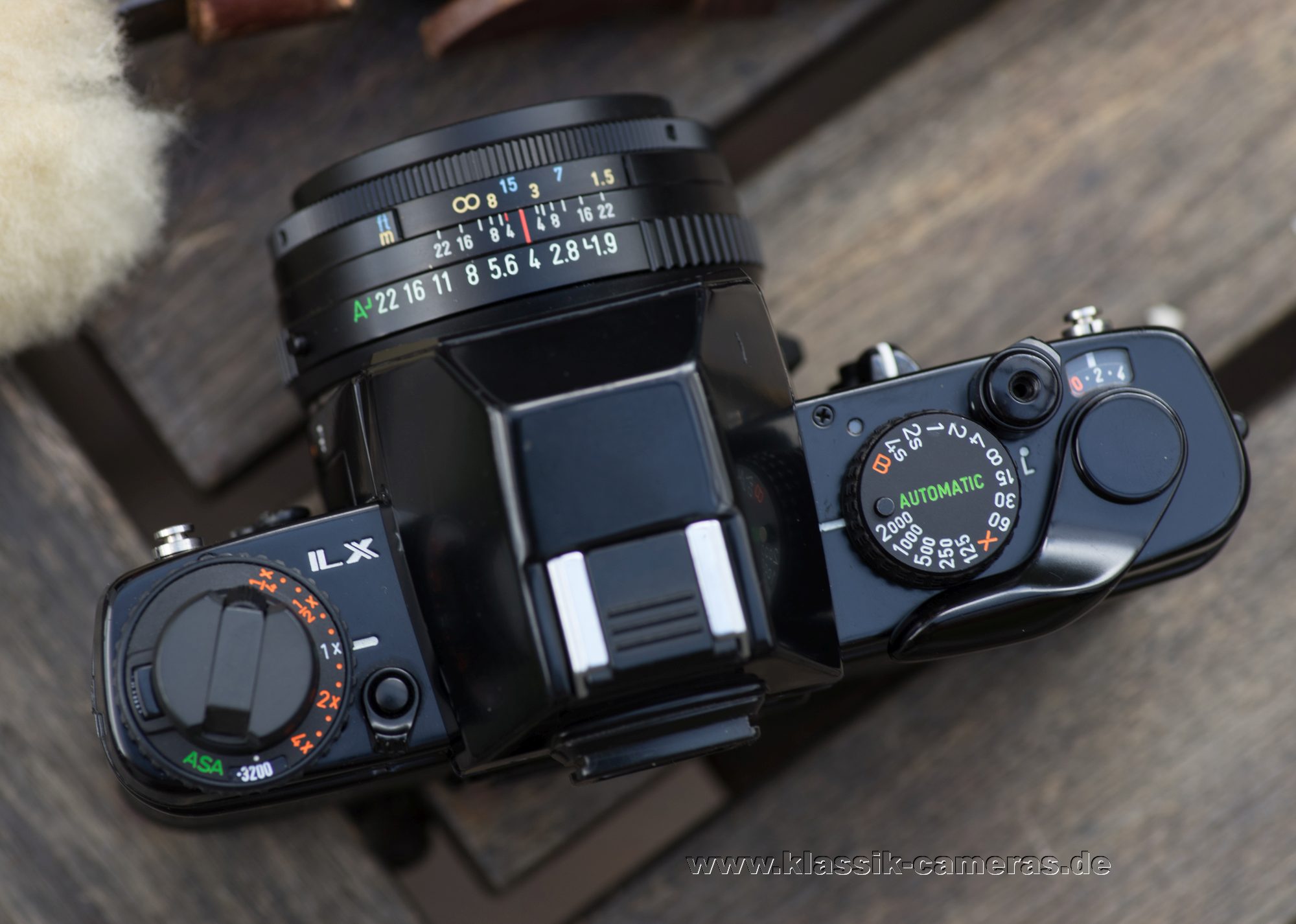
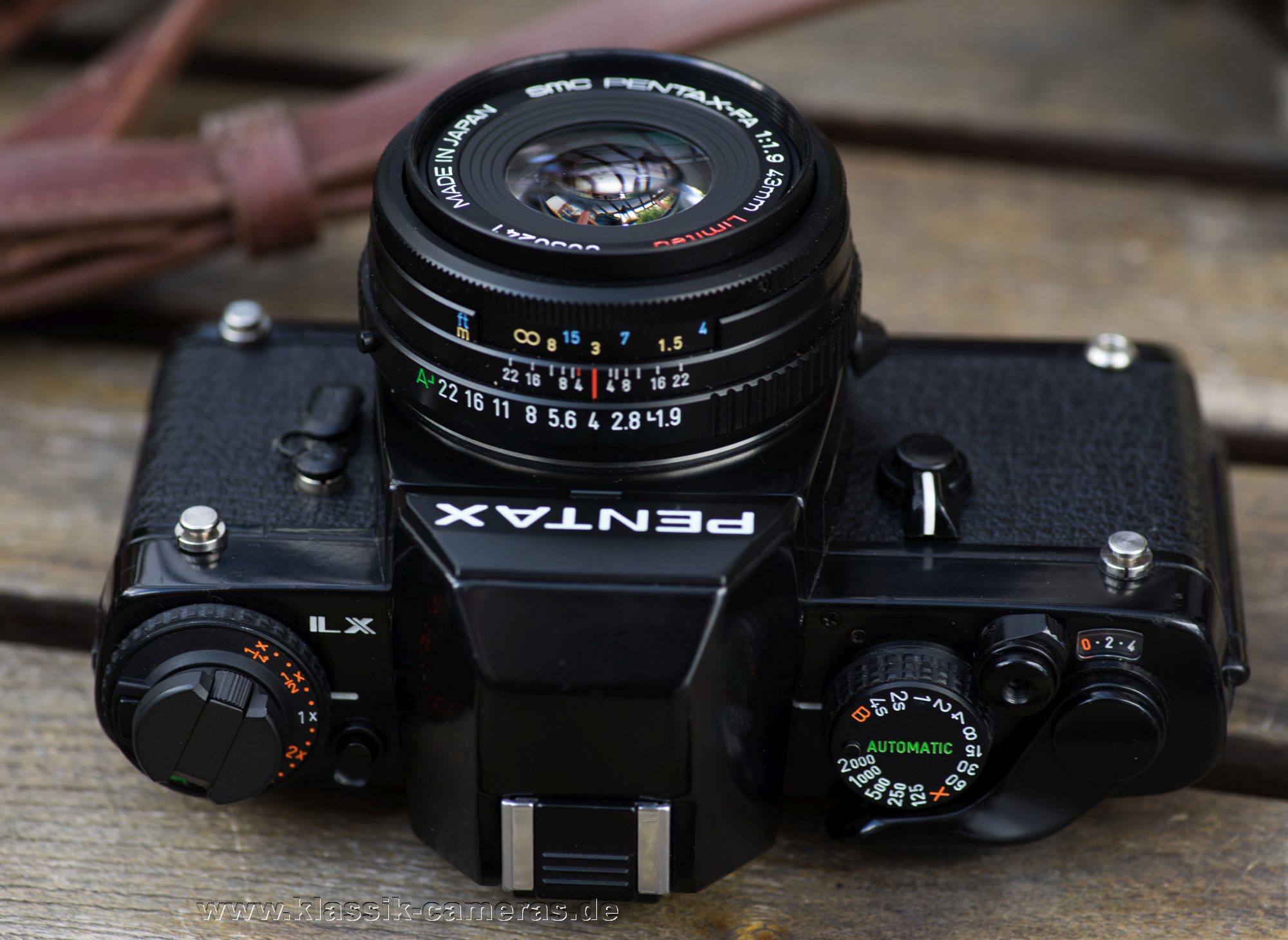
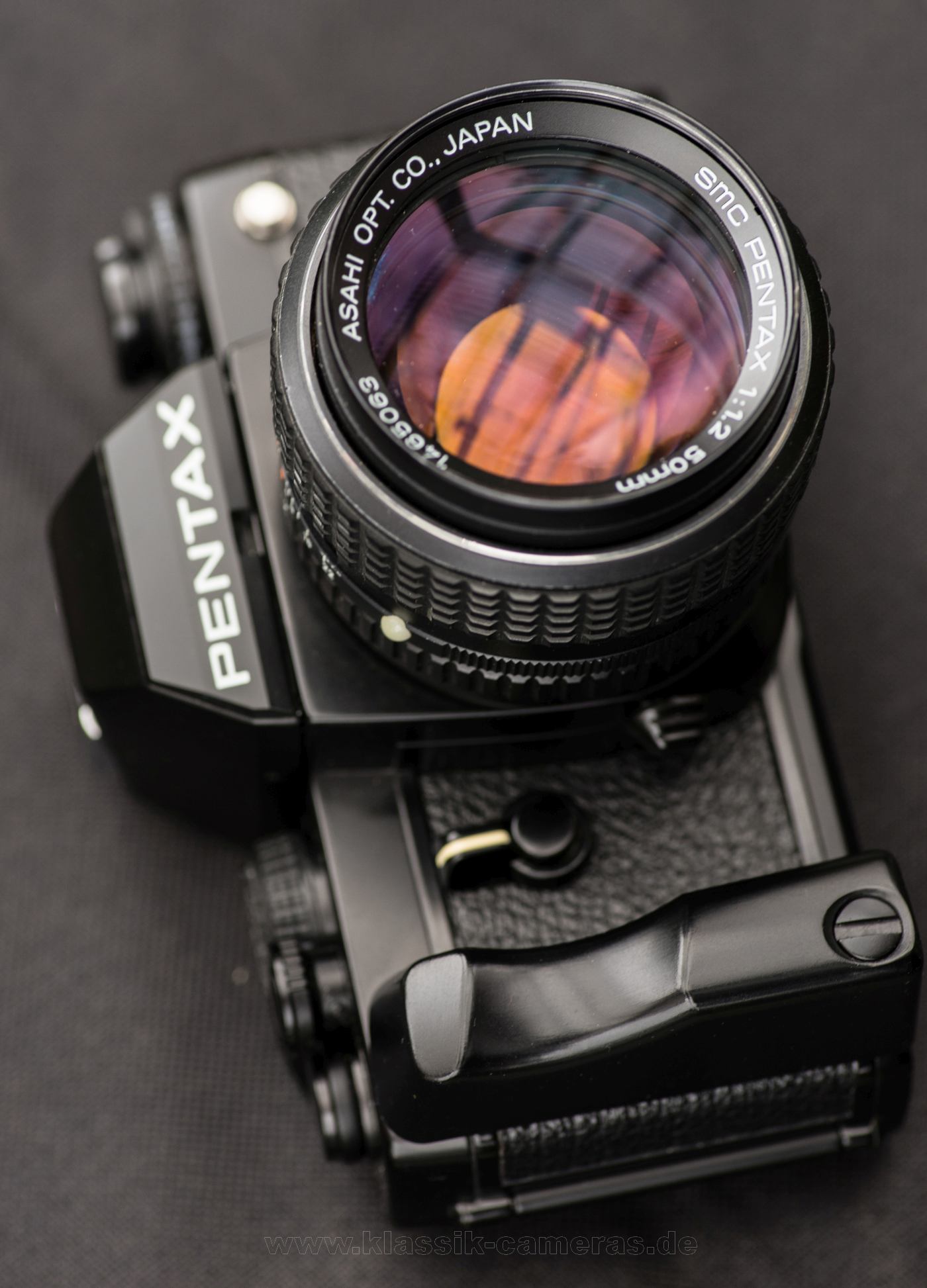
Nikon launched their first professional grade camera
incorporating Autofocus in 1988 (F4), Canon
followed in 1989 (EOS-1).
Pentax, even had pioneered autofocus with the ME-F (1981)
and upgraded the K-bayonet, somehow missed top notch technogy in
the late 1980's, and in consequence
suspended production of the LX around 1997~2001) without a
successor.
Given the production lifecycle of their predecessors (2-5
years), development was slowed down significantly also at
the competitors.
TODAY (2020)
Since a few years film and
manual focus cameras relive a comeback.
Assuming that a TTL meter and aperture priority
automatic exposure - under full control of the
photographer - are usefull as well as sufficient - keep
it straight and simple - and given the longevity, high
quality and small size/weight of Pentax cameras and
lenses, it is hard to argue that there will be a better
and more handy SLR camera than the Pentax LX....
or maybe, for absolute purists, who squeeze size, weight
(80g), leave away AE and highest shutter speed of
1/2000s, but keep TTL-metering, the Pentax MX
(pictured above)...
PENTAX 1971-1981 (ES - K2
-LX)
more Pentax: Early
History of SLR cameras
more Pentax: Early
Takumar lenses
Camera
Main page








